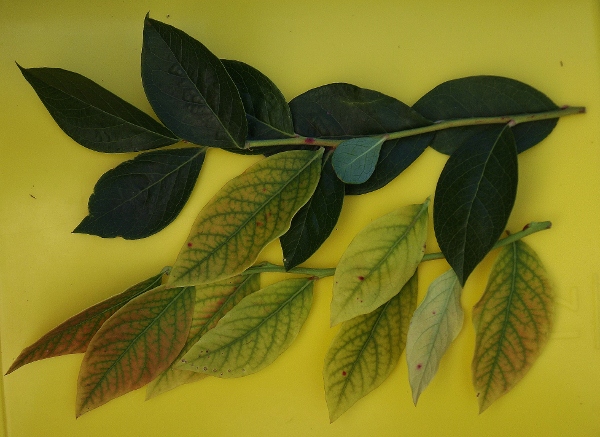Pest and Life Cycle – Blueberry chlorosis is not caused by pests or fungi, but is strictly a cultural problem resulting in an iron deficiency. Highbush Blueberries (Vaccinium corymbosum) prefer an acidic pH range of 4.5 to 5.2 and when the pH is higher some nutrients, such as iron, are unavailable to the plants.
Symptoms – Affected plants have leaves (occasionally stunted) with prominent green veins surrounded by pale yellow plant tissue. If the whole leaf is yellow (no green veins) you probably have a nitrogen or sulfur deficiency, or possibly poor soil drainage.
Management – You should test the soil pH around affected plants and if it is too high, add elemental sulfur (at label rate) or iron sulphate (faster acting) to the soil in order to lower the pH and allow plants access to essential nutrients. You can temporarily rectify the deficiency by working chelated iron into the soil around plants or dissolving and using it as a foliar spray – symptoms should subside in about 30 days.
Prevention – 1. Be careful not to situate blueberries near fresh concrete or masonry, as the water runoff from these will raise the soil pH levels. 2. If your blueberries are in close proximity to your lawn, be careful to keep any lime or dolomite applications to the grass away from the blueberry roots as this will also raise soil pH. 3. When planting blueberries, incorporate some peat moss (about 20%) with the existing soil as this will both acidify and help retain moisture during dry periods.




